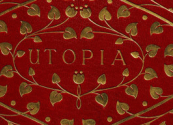Eliot Article Analysis
by Elissa Myers
Thierauf, Doreen. “The Hidden Abortion Plot in George Eliot’s Middlemarch.” Victorian Studies 56.3 (Spring 2014): 479-489. Academic Search Complete. Web. 13 Nov. 2014.
1. Consider the title of the article. Does it work well? Did it motivate you to read the article in the first place? Web.
Yes. “The Hidden Abortion Plot in George Eliot’s Middlemarch.” It is simple and descriptive but also has the value of shock factor.
2. How does the article begin and end? How does it introduce its fundamental argument? How much of the article is given over to the introduction? Conclusion?
The article begins by stating the fact that our knowledge of abortion in the nineteenth century is still shadowy. Then the author asserts the importance of studying such a topic in light of the emphasis placed on family planning by modern feminists. Then the author clarifies how she will apply the concept to Middlemarch, and what the stakes would be for our understanding of Rosamond’s character and the novel (we could read abortion as an extension of Rosamond’s carelessness and of her autonomy, but also of Eliot’s critique of female education).
The article ends by articulating how this reading has changed our assumptions about Rosamond (she is not merely careless, but is deliberately prioritizing her own happiness over that of her husband, unborn child, and family in general), and our assumption that middle-class women must not have been in control of their reproduction. It also provides an illustration of one coded way in which authors might have talked about abortion. Finally, the author articulates the impossibility of speculating on George Eliot’s intentions, but does actually speculate a little bit about the meaning of an entry of a peculiar abortifacient plant in her diary, using this instance to state that there were subterranean means of knowledge about abortion women might have had.
Intro lasts a little over two pages out of a total of ten pages. The conclusion is a little over a page.
3. How does the article marshal evidentiary support and proof? Do you see any flaws in the argument? What aspects of the article render it convincing to you?
The article “maps the question of abortion onto Middlemarch and then analyzes the discursive ramifications of that reading practice” (480). This also means that she is in some sense justifying her approach indirectly by fitting her approach into what we already know about Middlemarch (i.e. that Rosamond is willful, skilled at maintaining physical and mental autonomy, that she doesn’t regret losing the baby, and that she goes horseback riding to achieve her own ambitions). She also uses advice books to illustrate that Rosamond’s techniques of domestic control can be understood as generally encouraged, and uses 19th century medical knowledge as it was disseminated in newspapers to show that Rosamond would have known the consequences of riding. I mostly buy her argument, but I think it could have benefited from some narratological theory examining the way Lydgate believes the miscarriage to be Rosamond’s fault, and readers are encouraged to think the same.
4. Evaluate the style of the article. What makes it well written? What would you change if you could?
I would make it more direct and structured. I think she buries the lead in some cases, and I am a little confused by the structure of her thesis paragraph and statement. She states a lot of important points in the paragraph before her thesis paragrah and then leads up to a more specific point. It seems like a lot of the time she is trying to prove these points simultaneously in the same paragraphs, structuring her article more by which sources she is using than rhetorically, using each paragraph to prove a single point.
5. Is the article interdisciplinary in nature and/ or rooted within the specific discipline of English?
I would say it relies mostly on previous literary criticism and theory regarding Middlemarch and nineteenth-century literature, but incorporates some history as well.
6. How does the article use secondary sources/ work of other critics generally? How does it stake out new territory? Are you convinced of its originality?
The article is certainly original, but I often think she cites in ways that seem defensive or juvenile (using scholars’ names in parentheses, but not attributing ideas to them in the sentences themselves. She is often not citing someone’s unique theoretical concept or phrasing, but merely historical fact, often “showing too much iceberg,” in the words of Eric Hayot (116), or citing concepts that are already common knowledge to Victorianists.


